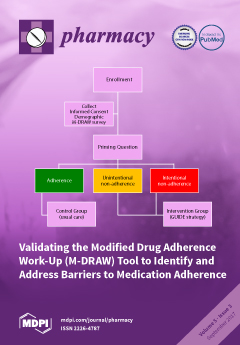Objectives & Background: Good curriculum is reflected as the backbone for standard universities to develop competitive professionals having great potential. Pharmacy education in Pakistan has gone through the same developmental stages as in other countries, but is still striving for improvement. In
[...] Read more.
Objectives & Background: Good curriculum is reflected as the backbone for standard universities to develop competitive professionals having great potential. Pharmacy education in Pakistan has gone through the same developmental stages as in other countries, but is still striving for improvement. In the present study, we want (i) to know the opinion on whether the current pharmacy curriculum requires any improvement in order to meet the training needs of pharmacy professionals regarding clinical knowledge and pharmacy practice; and (ii) to present some humble suggestions to decision-making authorities in order to improve it with respect to patient-focused programs (PFP).
Methods: The study was conducted in two sessions. In first session, a questionnaire was distributed to pharmacy students of eight public/private sector universities of Karachi (
N = 354) offering Pharm. D degrees. The second session dealt with the pharmacy teachers, deans, and practicing pharmacists in health care facilities (who are in any ways also related to academia), in order to take their opinions on and suggestions for the development of a better Pharm. D curriculum (
N = 135).
Results: Our results showed that 75.2% of respondents agree that the Pharm. D curriculum does not meet the international standards of practice, and 88.4% of respondents support the addition of more clinical aspects than industrial ones, as Pharm. D could be both clinically and industrially oriented, according to the needs of the Pakistani people. Furthermore, 80.2% of respondents are of the view that an apprenticeship should be included in last two years, while 88.4% demand a ‘paid residency program’ to facilitate the hospital, clinical and compounding areas of pharmacy. In addition, we also received a number of verbal suggestions for improving the Pharm. D curriculum being followed in Pakistan.
Discussion & Conclusions: We conclude that our Pharm. D curriculum needs additions in terms of clinical practice by providing residencies and electives in health care settings. Accordingly, the need for a clinically oriented curriculum is highlighted in Pakistan, keeping in mind the continuing importance of the industrial viewpoint. Various studies have criticized the pharmacy curriculum in Pakistan in the past. Conversely, we suggest some changes in the curriculum, as change is always needed for a better tomorrow.
Full article





